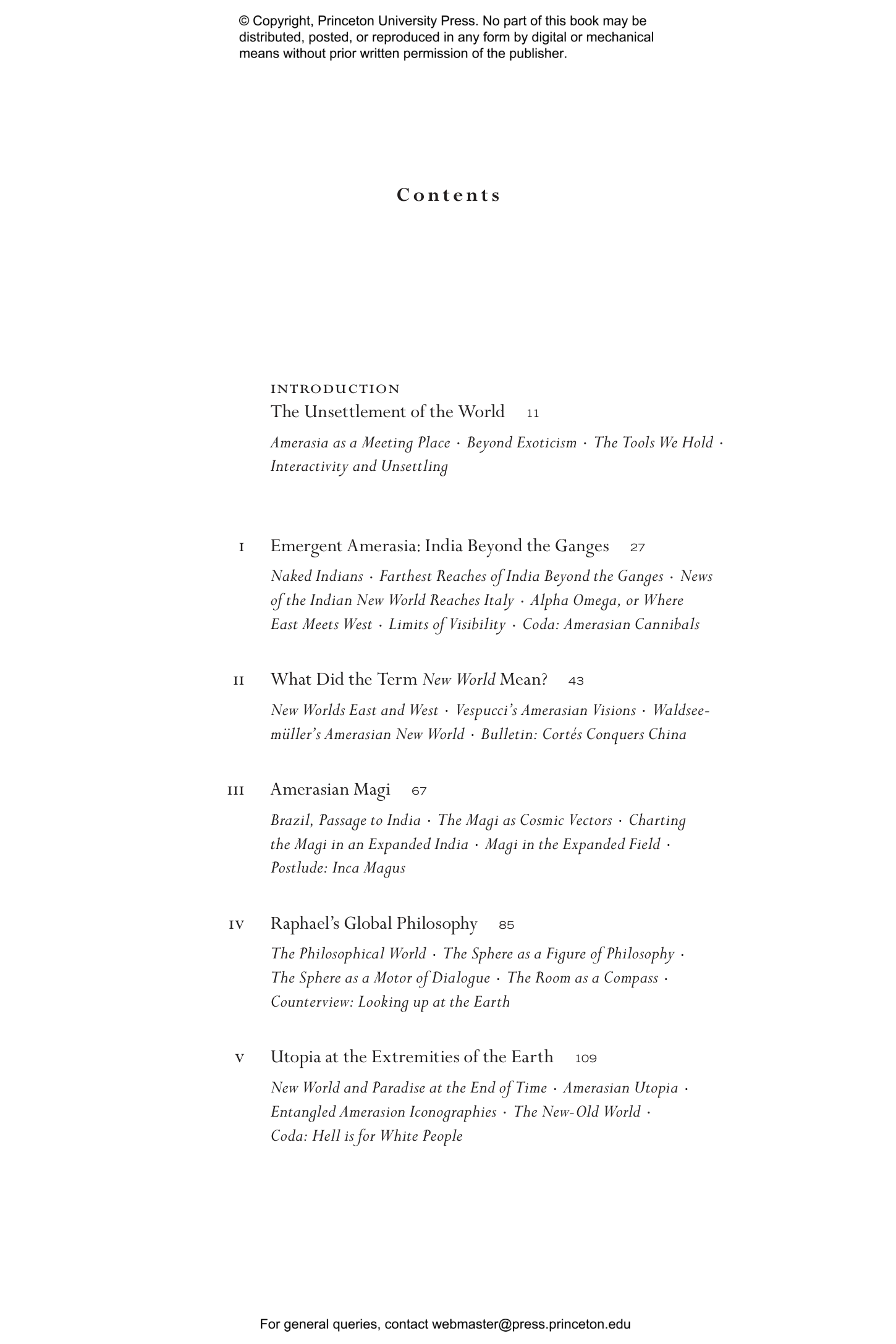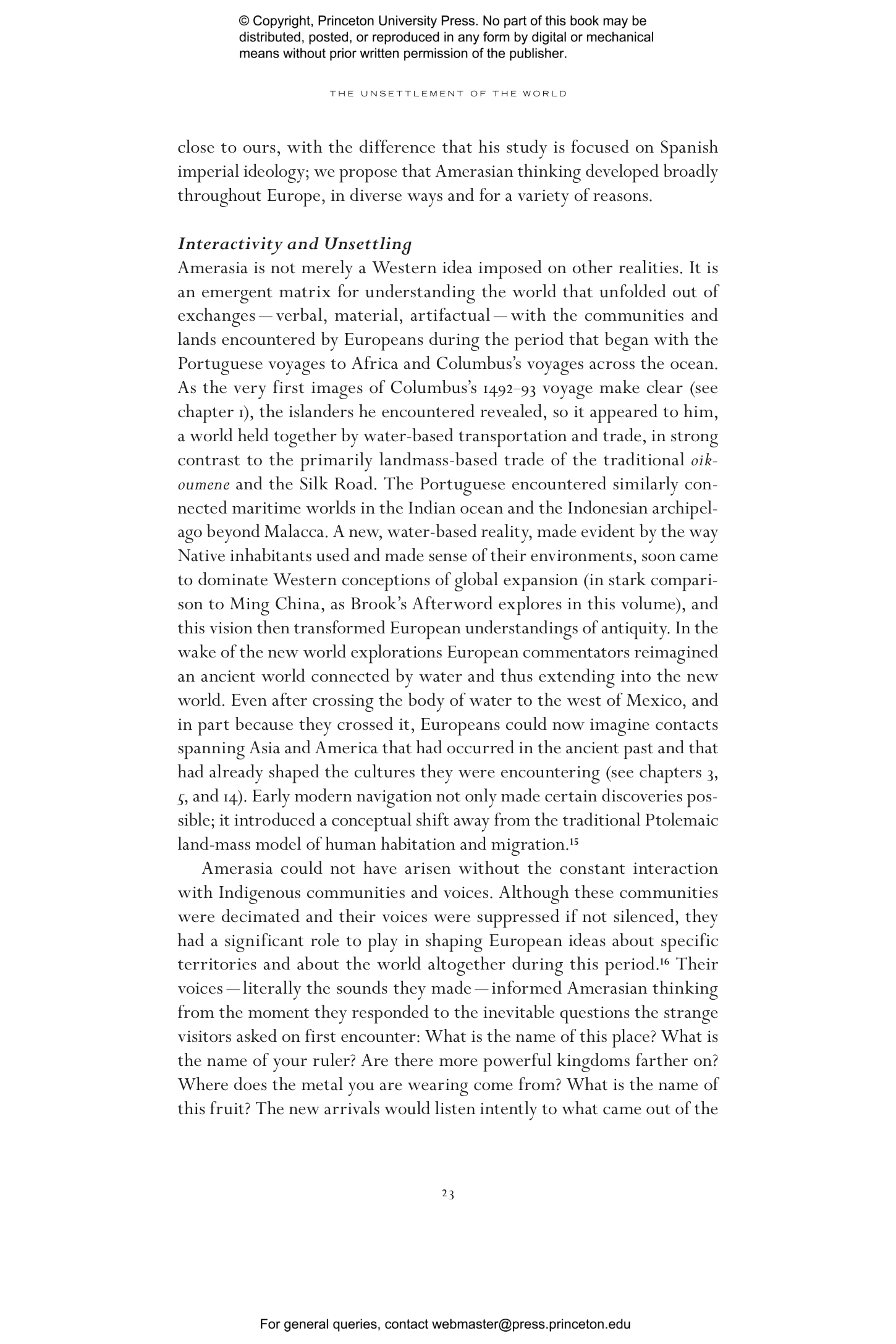America and Asia mingled in the geographical and cultural imagination of Europe for well over a century after 1492. Through an array of texts, maps, objects, and images produced between 1492 and 1700, this compelling and revelatory study immerses the reader in a vision of a world where Mexico really was India, North America was an extension of China, and South America was marked by a variety of biblical and Asian sites. It asks, further: What does it mean that the Amerasian worldview predominated at a time when Europe itself was coming into cultural self-definition? Each of the chapters focuses on a particular artifact, map, image, or book that illuminates aspects of Amerasia from specific European cultural milieus. Amerasia shows how it was possible to inhabit a world where America and Asia were connected either imaginatively when viewed from afar, or in reality when traveling through the newly encountered lands. Readers will learn why early modern maps regularly label Mexico as India, why the “Amazonas” region was named after a race of Asian female warriors, and why artifacts and manuscripts that we now identify as Indian and Chinese are entangled in European collections with what we now label Americana.
Elizabeth Horodowich and Alexander Nagel pose a dynamic model of the world and of Europe’s place in it that was eclipsed by the rise of Eurocentric colonialist narratives in the nineteenth and twentieth centuries. To rediscover this history is an essential part of coming to terms with the emergent polyfocal global reality of our own time.
Elizabeth Horodowich is Professor of History at New Mexico State University and the author of Language and Statecraft in Early Modern Venice and The Venetian Discovery of America: Geographic Imagination and Print Culture in the Age of Encounters. Alexander Nagel is Craig Hugh Smyth Professor of Fine Arts at the Institute of Fine Arts, New York University, author of The Controversy of Renaissance Art and Michelangelo and the Reform of Art, and coauthor of Anachronic Renaissance.
"Amerasia is an important contribution to a growing field of scholarship on how early modern Europeans attempted to make sense of the Americas within a global order that included Asia and Africa. . . . Amerasia serves as a valuable resource in its exploration of a topic that is increasingly being recognized as an important direction for scholarship on the Americas, and a call to others to take items out of its cabinet display for further examination and analysis."—Elizabeth Gansen, Renaissance and Reformation
“In this wide-ranging, erudite, and accessible volume, Horodowich and Nagel teach us to see the world in a new way, or rather, in an old way that has long been forgotten. We are accustomed to thinking that Christopher Columbus mistakenly believed he had reached Asia, but that other Europeans soon saw past his error. In Amerasia we discover that Columbus was not entirely wrong, and that a lot of people agreed with him – in a way – for a very long time. Europeans often thought of Mexico as a province of China, for example, or of China as a ‘New World.’ This ‘Amerasian thinking’ upends much of what we thought we knew about the literature and art of the early modern European encounter with the wider world.” – Ricardo Padrón, Associate Professor of Spanish, University of Virginia
"Seldom does a work of history force us to revisit an entire universe of evidence as if we had never seen it before. Amerasia powerfully refutes contemporary dismissals of early modern Europe's perception of the Americas as Asia as the history of an error. Instead, Horodowich and Nagel demonstrate that Europe's dialogue with the lands and peoples of the Americas, Asia, and Africa – solipsistic and violent as it was – produced rich intellectual and material cultures that obeyed coherent cosmological and geographical paradigms. It was only through arduous rehearsal and gradual shift that this epistemology gave way to our own problematic modernity. This splendid work of scholarship will remain indispensable reading for anyone interested in the histories of early globalization, cartography, empire, and race, as well as in the histories of scientific revolutions and broader cultural upheavals." – Nicolás Wey Gómez, Professor of History, California Institute of Technology, and author of The Tropics of Empire: Why Columbus Sailed South to the Indies.
“Thoughtfully conceived and elegantly written, Amerasia takes readers into a dazzling journey across media, materials, representations, misunderstandings, and intuitions to recuperate a world-imaginary where near and far, familiar and unknown, the distant past and the impending future enmesh together. The authors ingeniously piece together traces left behind by Europeans’ process of self-orientation at the dawn of the colonialist enterprise and the codification of the exotic and the other. By unsettling conventional disciplinary boundaries, geographical coordinates, and clear-cut distinctions between imagination, knowledge, and experience, Ameresia is a cogent study that will certainly provoke discussion and invite us to rethink old questions in new ways. “ – Michele Matteini, Associate Professor of East Asian Art, Architecture, and Visual Culture, NYU































